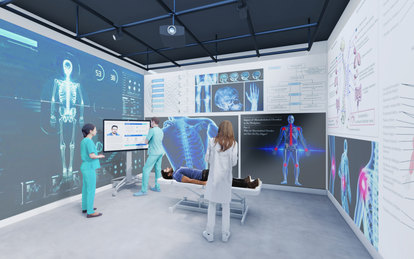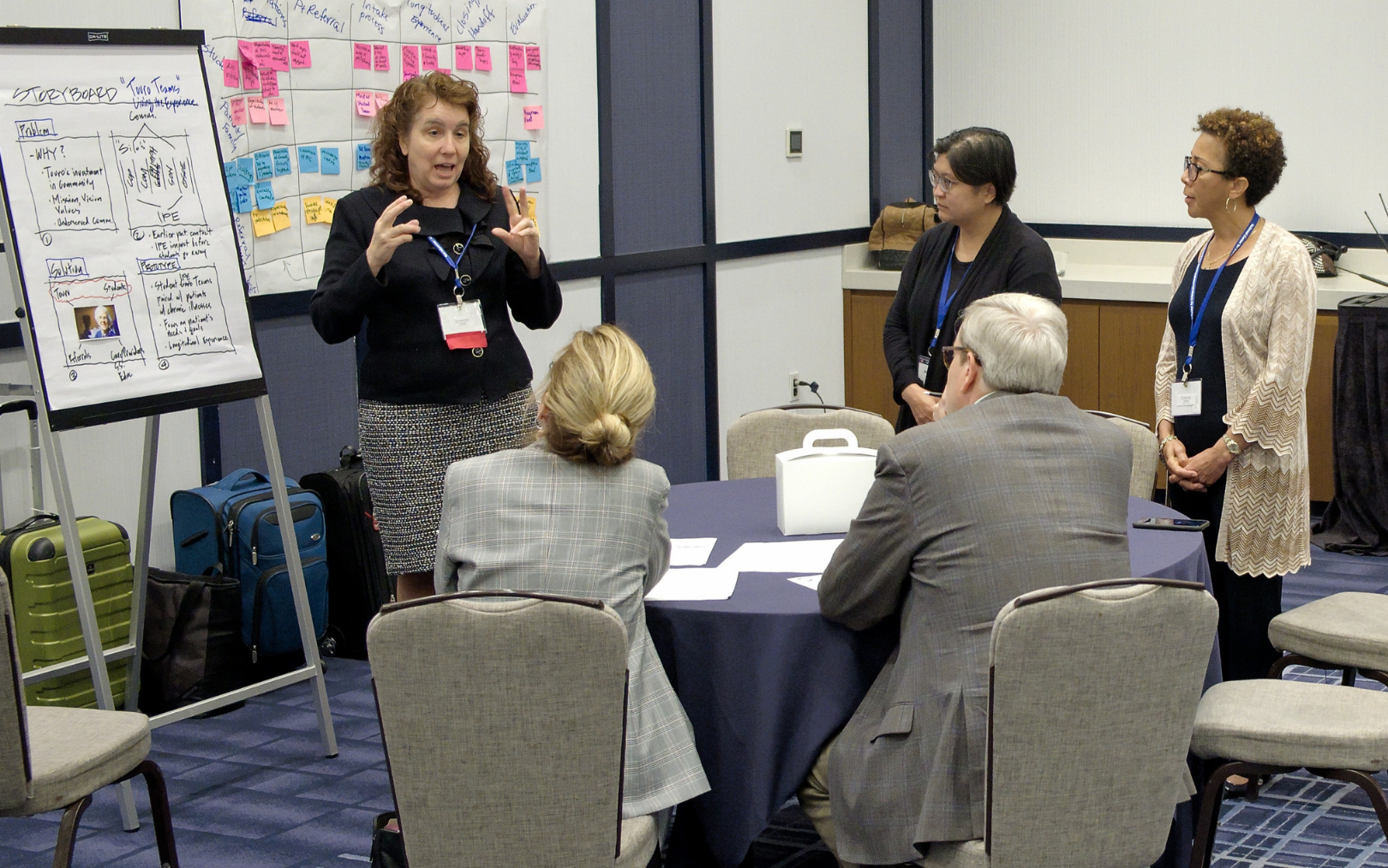Seizing the Moment! Interprofessional Education as a Catalyst to Drive Change

For students in the health professions, 2020 was a year like no other. Not only were learning experiences changed dramatically—lack of clinical sites, virtual simulation and anatomy, constrained “team based” learning opportunities—but more importantly students had a real window into what it will mean to be a care provider in times of a global pandemic. They also could see the impacts of social determinants of health and how access to care was affected.
Meanwhile, leadership in the health professions—educators and practitioners across the country were doing their best to adapt. For many of these leaders, the roles overlap so the stress was multiplied—concern for both students and patients, as well as their own health. The pandemic has exposed pre-existing inequities in healthcare access and highlighted the importance of integrated patient-centered care. To make meaningful change to the healthcare system, it is important to focus on interprofessional behaviors and practices within the education setting. Interprofessional education and collaborative practice is proven to build holistic teams that help improve patient outcomes.
The National Center for Interprofessional Practice and Education (Nexus) is a leader in connecting education with care delivery and serving as a national resource to inspire change. Since 2017, SmithGroup has partnered with Nexus on the Clinical Learning Environment Innovation Challenge, an annual program that has enabled institutions across the country to use design thinking to create solutions to their real-world IPE challenges, such as:
- Exposing the hidden curriculum by creating a new way for students to share experiences
- Improving cultural competence through standardized patient encounters
- Expanding a successful patient-centered clinical operation to integrate students
Why Design Thinking at This Moment?
The action-oriented agenda for the 2021 Nexus Innovation Challenge set forth by Nexus focuses on change. It was developed in response to the challenges facing health care educators, students and practitioners in the response to events of 2020. Teams of educators and practitioners already resoundingly agree on the need for transformation. The real focus is on building a roadmap to help empower these teams with new tools to become “adaptive leaders” to sustain momentum in times of disruption.
Design Thinking is Uniquely Appropriate for These Challenges
The design thinking toolkit offers a fresh perspective, gathers input from a broader stakeholder group, resists jumping to conclusions, encourages participants to trust the process and be creative in exploring possible solutions. The 2021 Nexus Innovation Challenge has provided a great opportunity to connect the Nexus agenda and design thinking to address challenges at the intersection of the pandemic and social determinants of health.
A national cross section of IPE teams are focusing on improving the following outcomes for students and patients:
- A team from Texas A&M University is focusing on empower students to be leaders and advocates for IPE in a student-run clinic.
- The University of Minnesota 1Health team is focusing on preceptor’s impacts on students. Their goal is to foster greater awareness on the role of precepting and how it impacts successful interprofessional behaviors.
- For the West Virginia University team, their focus was on care transitions for high-risk patients, with the goal of improving the patient experience through more intentional interprofessional encounters with students.
As we reflect on the prototypes developed, there are great lessons to learn that directly inform our work as designers. How can we shape learning environments to help students grow to be leaders in an evolving world of care delivery? How can we create experiences that reinforce the continuum of learning consistent with the Institute of Medicine’s “Learning Continuum” and more deeply integrate IPE? Following are some of the examples of how a nuanced understanding of IPE can influence the physical clinical learning environment:
- Students can be effective as advocates for IPE at clinical sites and positive experiences with preceptors can reinforce the value of IPE.
- Enabling simulation areas to function well for continuing education outside of regular hours will offer the opportunity for clinical preceptors to refine their interprofessional skills. Making simulation areas accessible and inviting to practitioners is key to successful continuing education programs.
- Clinical learning offers students the opportunity to be entrepreneurial.
- In the academic setting, offering students expanded access to skills development areas can give them increased opportunities to experiment and test different situations.
- Cultural fluency is increasingly important. Students should have fluidity in applying IPE in a range of contexts—including rural, medically underserved, and urban settings—both within the U.S. and globally.
- Flexibility to create a range of simulation settings is fundamental here. The Simulation Theater concept enables spaces to be reconfigured to model a range of care delivery settings – from a community clinic to an urban ICU. Additionally, details such as including mannekins that visually represent ethnic and racial diversity can be a small step to help students build empathy.
- In order to foster rapid change, it is important to use communication/connectivity to build on existing resources to avoid re-inventing the wheel.
- A Resource Hub can be an important part of a health sciences ecosystem of learning spaces. The next generation of the library may offer students new ways of connecting and sharing resources on interprofessional education and collaborative care.
- Address the many roadblocks for learning at care transition points.
- Standardized patient encounters in spaces such as Home Health Simulation or Activities of Daily Living (ADL) Labs can play an expanded role in enabling students to learn how to address unique issues during care transitions, especially for vulnerable populations. Care is becoming increasingly mobile. The ADL lab plays a major role in helping students envision how technology can help a patient access care remotely through telehealth and plug-in ready devices.
Our hope is that a consistent evolution of experiences will inspire students to be advocates for interprofessional practice and education—not only while in the academic world—but, more importantly, as they transition to practice and grow within their field, where the challenges and roadblocks can be significant. In our conversations with IPE teams, it is clear the physical environment plays a fundamental role and can lead to improved experiences across the entire spectrum of learning to care delivery. With the momentum that Nexus is helping to energize, we are optimistic that change is achievable.


